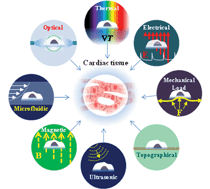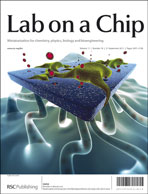Engineered approaches to the stem cell microenvironment for cardiac tissue regeneration
Abstract
Micro- and nanoscale engineering approaches in medicine have the potential to recreate physiologically relevant stem cell microenvironments to enhance our understanding of stem cell behaviour and bring stem cell therapy closer to fruition. The realization of such advancements will impact a number of therapeutic applications, the most immediate of which may be the repair of heart tissue. Despite profound advances in creating physiologically relevant in vivostem cell niches through the control of biochemical regulatory factors, further synergism of innovative techniques promise to elucidate the impact of a number of physical cues such as stem cell differentiation into cardiac cells, the electromechanical coupling among these cells, and the formation of bioengineered cardiac tissue grafts. This review examines the recent physiologically relevant micro- and nanoengineering efforts that have been made to address these factors. In Sections II and III, we introduce the traditional focuses of stem cell derived cardiac tissue: differentiation directed by transcription factors and structural cues within the stem cell niche. However, the majority of this review, Sections IV–VII, endeavours to highlight innovative and unconventional microscale engineering techniques that have employed topographic, biomaterial, microfluidic, mechanical, electrical, and optical stimulation for stem cell based cardiac tissue engineering.


 Please wait while we load your content...
Please wait while we load your content...